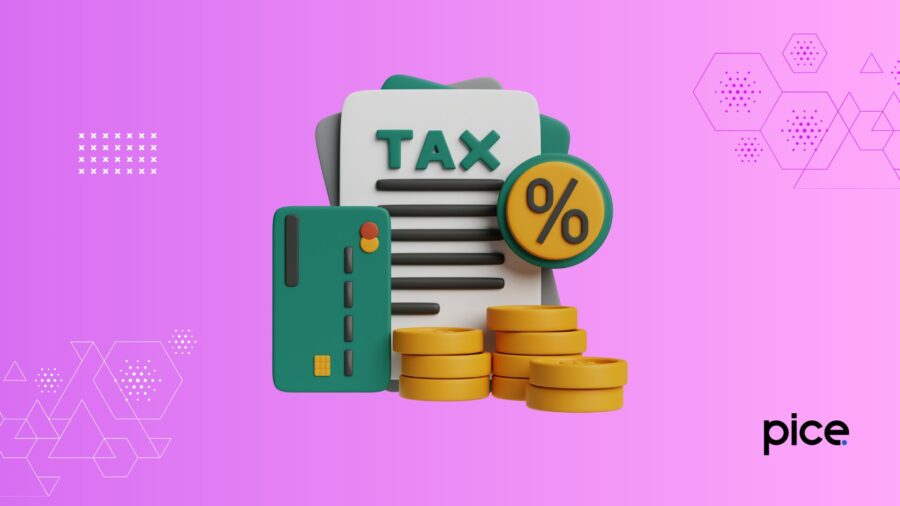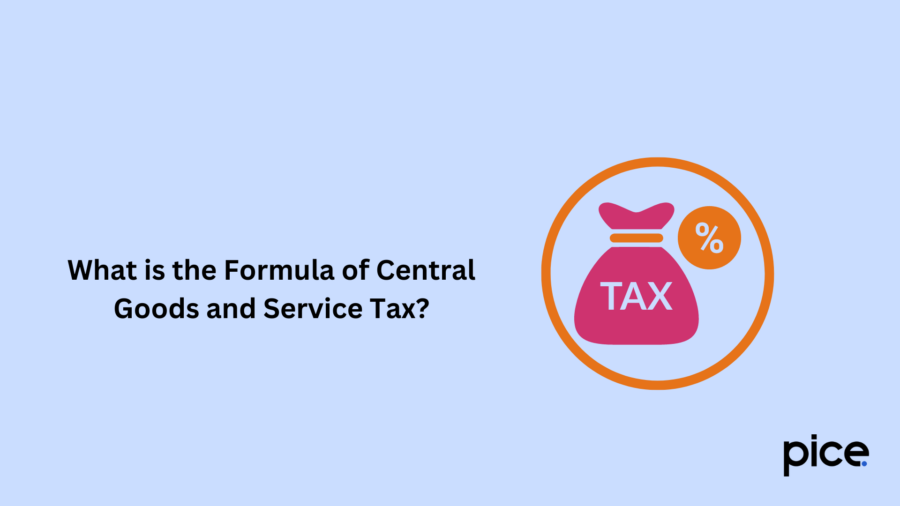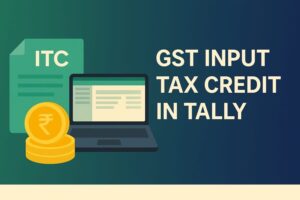What Is CGST (Central Goods and Services Tax) in India: Explore Full Form and Meaning
- 16 Sep 24
- 8 mins

What Is CGST (Central Goods and Services Tax) in India: Explore Full Form and Meaning
- What Is CGST?
- CGST Example
- Features of the CGST Act, 2017
- CGST Slab Rates
- Why Are There Three Categories in GST?
- Understanding CGST Act
- Key Rules for CGST
- CGST Features
- What is the Formula of Central Goods and Service Tax?
- Documents Required for Central Goods and Service Tax Registration
- Determination of CGST, SGST or IGST Applicability
- Conclusion
Key Takeaways
- CGST is a central tax on intra-state supply of goods and services under India's GST.
- The CGST Act of 2017 replaces multiple indirect taxes and allows input tax credits.
- CGST rates are categorized into slabs of 0%, 5%, 12%, 18%, and 28%.
- Businesses must register, issue valid invoices, and calculate CGST correctly.
- CGST and SGST apply to intra-state transactions; IGST applies to inter-state transactions.
The Central Government of India introduced Goods and Services Tax (GST) Laws in 2017 with a primary objective to bring together the fragmented taxation system in India. This blog explores the details of Central Goods and Services Tax (CGST), which is a vital component of GST, its meaning, purpose and how it affects taxpayers.
What Is CGST?

CGST stands for Central Goods and Services Tax. It is part of the Goods and Services Tax (GST) implemented in India on July 1, 2017. It aimed to simplify the tax system by combining central and state taxes like VAT, excise duty, sales tax, service tax, etc. This made taxation easier to understand and more transparent for everyone.
CGST Example
Suppose you are a supplier of electronic goods based out of West Bengal. You sell a laptop worth ₹80,000 to an individual who also resides in West Bengal. This sale transaction is classified as an intrastate sale, meaning both CGST and SGST will be applicable.
The GST rate on laptops is 18%, with 9% allocated to CGST and 9% to SGST. The buyer will need to pay ₹7,200 (₹80,000 * 9%) as CGST and another ₹7,200 as SGST, making the total cost of the laptop ₹94,400 (₹80,000 + ₹14,400). Besides manual calculation, you can use the GST calculator to accurately find your tax burden and applicable tax rates.
Features of the CGST Act, 2017
The CGST Act of 2017 outlines the framework for the levy, assessment, collection and refund of CGST. Some of its key features are:
- Tax levied on every intra-state supply of goods and services
- Facilitates self-assessment for registered taxpayers
- Imposes a tax collection obligation on e-commerce operators, not exceeding 1% of taxable supplies
- Includes provisions for audits to ensure compliance
- Grants officers authority to inspect, search, seize and arrest
- Provides methods for tax recovery from defaulting taxpayers
- Outlines penalties for non-compliance and contraventions
- Includes transition provisions for normal taxpayers
- Features an anti-profiteering clause to pass on reduced tax benefits to customers
- Allows businesses to claim Input Tax Credit on the GST paid on inputs used in the production of goods or services
- Requires an e-way bill for the interstate movement of goods worth more than ₹50,000
CGST Slab Rates

The CGST slab rates vary based on the nature of goods or services. As of now, the slab rates are as follows:
- 0%: Essential goods and services like education services, books, fruits etc.
- 5%: Basic necessities and services like healthcare services, textiles, etc.
- 12%: Most standard goods and services like luxury hotels, computers among others
- 18%: Consumer durables, automobiles, banking services and other luxury items
- 28%: De-merit goods like tobacco and alcohol
Why Are There Three Categories in GST?
GST in India is divided into three categories:
- State Goods and Services Tax (SGST)
- Central Goods and Services Tax (CGST)
- Integrated Goods and Services Tax (IGST)
This categorisation ensures that tax revenue is fairly distributed between the State and Central Governments. It also provides a clear division of tax collection responsibilities between the centre and states.
The division helps maintain uniformity in tax rates across all states in India and facilitates transparent taxation between states. Lastly, it prevents the double taxation framework by clearly separating intrastate transactions and interstate transactions.
Understanding CGST Act
The Central Goods and Services Tax Act is a comprehensive piece of legislation introduced on July 1, 2017. It covers various aspects of GST while majorly governing the collection of tax on goods and services in intra-state supplies. The Act was aimed at simplifying taxation in India by bringing various indirect taxes under one bracket. This would improve the ease of doing business across the entire country.
Key Rules for CGST
Now that you are familiar with the CGST Act of 2017, let us explore some key rules that registered suppliers must follow:
- Businesses with annual turnovers below ₹40 lakh (goods) and ₹20 lakh (services) are exempt from GST registration
- Registered businesses must issue a valid GST invoice for every sale
- Small businesses with turnovers under ₹75 lakhs can opt for the GST composition scheme with lower taxes but must issue a bill of supply instead of a GST invoice
- Invoices or bills of supply must have unique serial numbers in sequential order
- CGST on intrastate sales is half of the total GST rate, while the other half is SGST (e.g., 14% CGST on a 28% GST rate for electronic goods).
The CGST Rules are subject to changes and updates. It is advisable to consult with a tax professional or refer to central government resources for the latest rules and regulations.
CGST Features
The central government levies CGST to replace various existing indirect taxes like central excise duty, value-added tax and service tax. This destination-based tax is applicable only within the state. CGST credit can be used against IGST and CGST.
Moreover, there is a composition scheme for small businesses that provides benefits up to a turnover of ₹75 lakh. A ₹20 lakh exemption limit is also in place. This makes it easier for smaller businesses to manage their tax liabilities.
What is the Formula of Central Goods and Service Tax?

The formula for calculating CGST is:
CGST = (CGST Rate / 100) * Taxable Value
For instance, the CGST rate of a product = 18%
Taxable value = ₹100
CGST = (18/100) * 100 = ₹18.
Documents Required for Central Goods and Service Tax Registration
The documents required for CGST registration depend on the nature of the business and its legal structure. Some common GST registration documents are as follows:
- PAN card
- Aadhaar card
- Address proof
- Bank account details via cancelled cheque leaf
- Partnership deed (for partnerships)
- Memorandum of Association (for companies)
- Recent passport-size photograph
Determination of CGST, SGST or IGST Applicability
The applicability of tax components, that is CGST, SGST, or IGST, depends on the place of the supplier and the recipient.
The GST collected in a transaction between two states is shared between the central government and the state where the goods are consumed. This is IGST applicable for inter-state transactions.
Whereas for transactions within a single state, the GST is divided between the central government and the state where the sale occurs. CGST and SGST are applicable for such intra-state transactions within a state.
Conclusion
The Central Goods and Service Tax is an integral component of the complex tax structure in India. It has simplified the taxation process and promoted efficiency in the economy. Understand the features and rules of CGST and ensure compliance with tax laws and your GST liabilities. This will avoid confusion among taxpayers for vendor payments, improving clarity in taxation.
💡If you want to streamline your payment and make GST payments, consider using the PICE App. Explore the PICE App today and take your business to new heights.
 By
By 

















